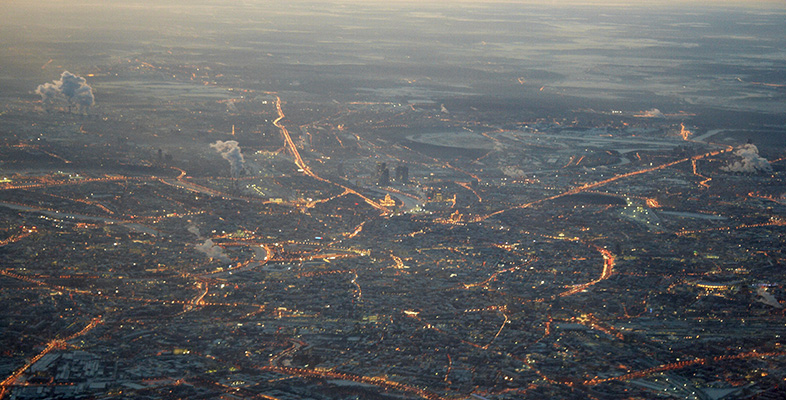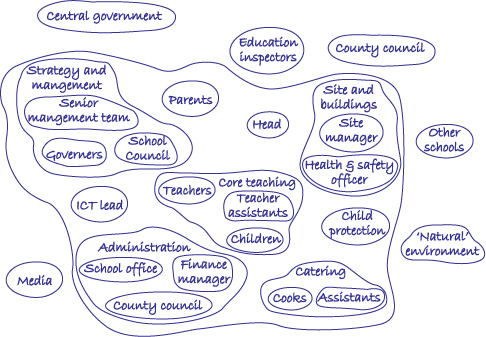9.2 Purpose and boundary
Thinking of an organisation as a system suggests we pay attention to the diverse elements in an organisation, their connections, their functions, the overall purpose, the boundary aspects and, perhaps most important of all, who is describing and determining each of these.
Activities 9 and 10 were a chance for you to reflect on the purpose of your chosen organisation from your and others’ perspectives, and the key elements of your chosen organisation. You can now take this a step further to think about purpose, boundaries and the structure of an organisation together rather than separately.
Activity 11 Draw a systems map of your chosen organisation
Draw a systems map of your chosen organisation, showing the different elements and boundaries of it from your perspective.
(Note: guidance on drawing systems maps is available in the Guide to Diagrams [Tip: hold Ctrl and click a link to open it in a new tab. (Hide tip)] .)
Discussion
My systems map of the school incorporates some aspects from my rich picture. Several elements, such as strategy and management, site and buildings, and core teaching, are shown as sub-systems – i.e. they have several elements within them. The strategy and management sub-system comprises a senior management team, governors and the school council. I’m not sure what is done as part of child protection, so this is just described as a single element though a teacher would put many more elements in here I’m sure.
I found it difficult to decide where some elements should be positioned. Should I include parents in the core teaching sub-system? In drawing the systems map, I realise I’ve left out some elements – for example, parking, staff training and education inspectors. These need to be included in the next iteration of this map.
Your systems map is likely to differ from others’ system maps of the same organisation, because you assign a different purpose to the organisation and you have made different boundary judgements about what is in the organisation and what is outside.
With this is mind, answers to the question ‘what is organisation X’s purpose, structure and processes?’ are directly linked to the purpose and boundary choices you and others may make about what is part of an organisation and what is outside the organisation. Even where there are differences, you are still talking about the same organisation.
This may seem a somewhat dry and academic discussion, but as you go through the coming weeks, it will become more apparent that the boundary you (and others) assign to any organisation is key to understanding its environmental impacts and responsibilities. The boundaries are often used to mark an organisation’s role and responsibilities, and are sometimes disputed, often through legal means, particularly when environmental impacts occur that are costly to remediate, such as pollution incidents.
For the moment, it is important to be aware that the structure of an organisation and its processes shape how an organisation impacts upon an environment through its activities, and where and how environmental considerations are addressed (if at all).

